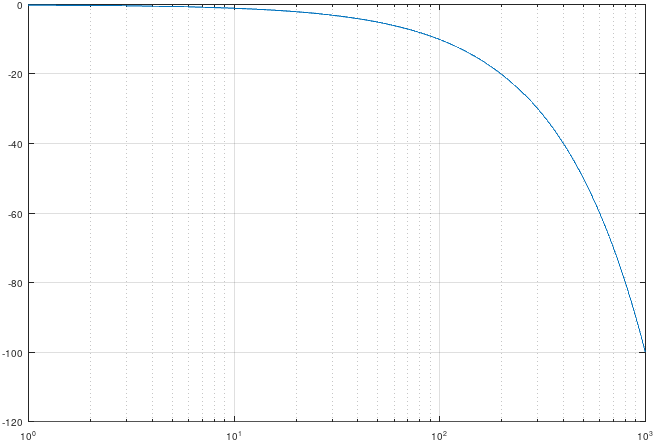Post History
Your requirements are odd. Can you specify what purpose that filter is for? I'm saying this because, for a -0.1 dB/Hz, a filter will have a continuously increasing attenuation slope. Think of it li...
#1: Initial revision
Your requirements are odd. Can you specify what purpose that filter is for? I'm saying this because, for a -0.1 dB/Hz, a filter will have a continuously increasing attenuation slope. Think of it like this: at DC, it will have (e.g.) a magnitude of $H(0)=1$. Then, at:
$$\begin{align}
1\space\text{Hz}\space &\rightarrow\space H(1)=10^{-0.1/20}H(0) \\\\
2\space\text{Hz}\space &\rightarrow\space H(2)=10^{-0.1/20}H(1)=10^{-0.2/20}H(0) \\\\
3\space\text{Hz}\space &\rightarrow\space H(3)=10^{-0.1/20}H(2)=10^{-0.2/20}H(1)=10^{-0.3/20}H(0) \\\\
\end{align}$$
and so on. In other words, the slope will not be an integer, or even fractional part of frequency, $N/f$, it will be a power of frequency, $N^f$. This is how the Bode plot would look like:

This looks like an ideal Gaussian filter (itself having a much stronger increasing attenuation). If that's what you want, you're stating the problem based on false assumptions: all so-called Gaussian filters are nothing but approximations, and all obey the $N/f$ slope. It can't be any other way, since $\text{e}^{-x^2}$ has infinitely many derivatives. If a Gaussian filter is not what you want then I have to wonder what is your purpose?


















